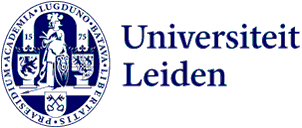
Searching for science in patent texts
Just like scientific articles, patents cite scientific literature to support their findings. These references provide valuable information on how science is used to develop practical applications. However, extracting this information from patents is not that simple.
Jian Wang and Suzan Verberne of Leiden Institute of Advanced Computer Science (LIACS) have received € 100,000 from the Academic Research Programme of the European Patent Office to investigate how scientific knowledge is used in the development of patents.
Cross-references in patents
'There are two different references in patents,' explains Wang. 'References on the front page, which are prior publications that are relevant for assessing whether the focal invention is patentable.. Secondly, there are references in the text, which can be compared to scientific references. The latter are important because of their function in examining how science is used in practice. There is just one problem: because they are part of the running text, they are more difficult for a computer to recognise.'

Recognising references in the text
In addition to the recognition problem, the references in the text use different citation methods, often lack information such as a title and may contain errors. Wang and Verberne plan to use advanced text-mining methods to solve these problems. 'Using sequence labelling, i.e. a pattern recognition task, the computer indicates for each word whether it is part of a reference or not,' Verberne explains. Then the computer can recognise what information the references contain and match this with the information from large databases with scientific publications. Ultimately we want to examine more than 19 million patents.'
'Ultimately we want to examine more than 19 million patents.'
Application of science in technology
With the data they obtain, they investigate exactly how science contributes to the creation of a patent. 'This research will provide extensive insight into the characteristics of scientific publications used in technology,' Wang says. 'It could show, for example, that theoretical research is used in a different way to applied research, or that it leads to a different kind of innovation. And that is just one of many factors. Ultimately, we will learn much more about the ways science and technology work together and influence each other.'
The European Patent Office (EPO) set up the Academic Research Programme in 2017 to encourage research into the role of patents in the European economy. Its aim is to gather knowledge that European policymakers and industry can use. With the Academic Research Programme, the EPO invests a total of €300,000 per year in research. You can find the EPO website here.
Text: Chris Flinterman
